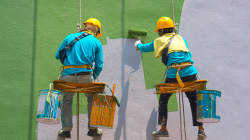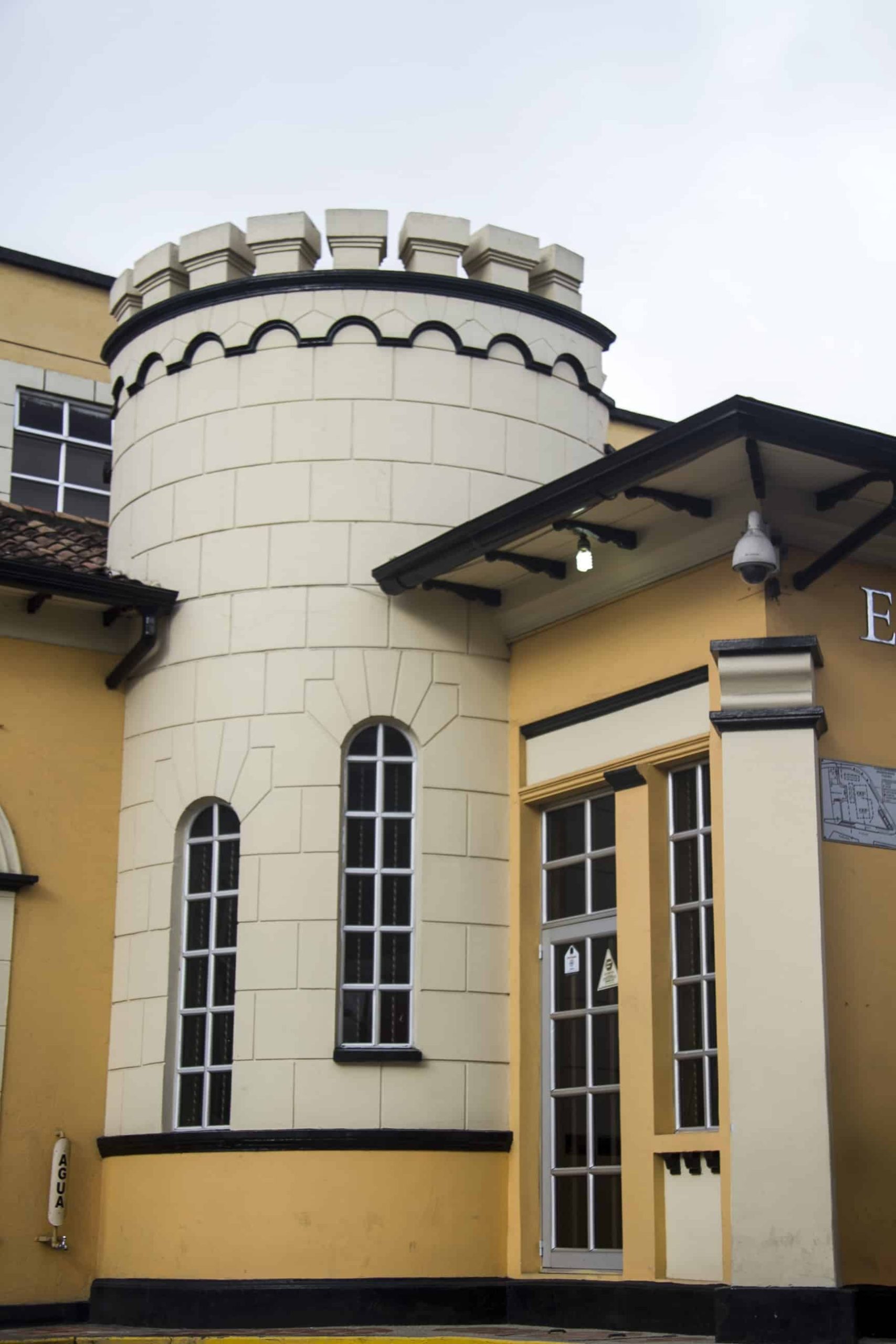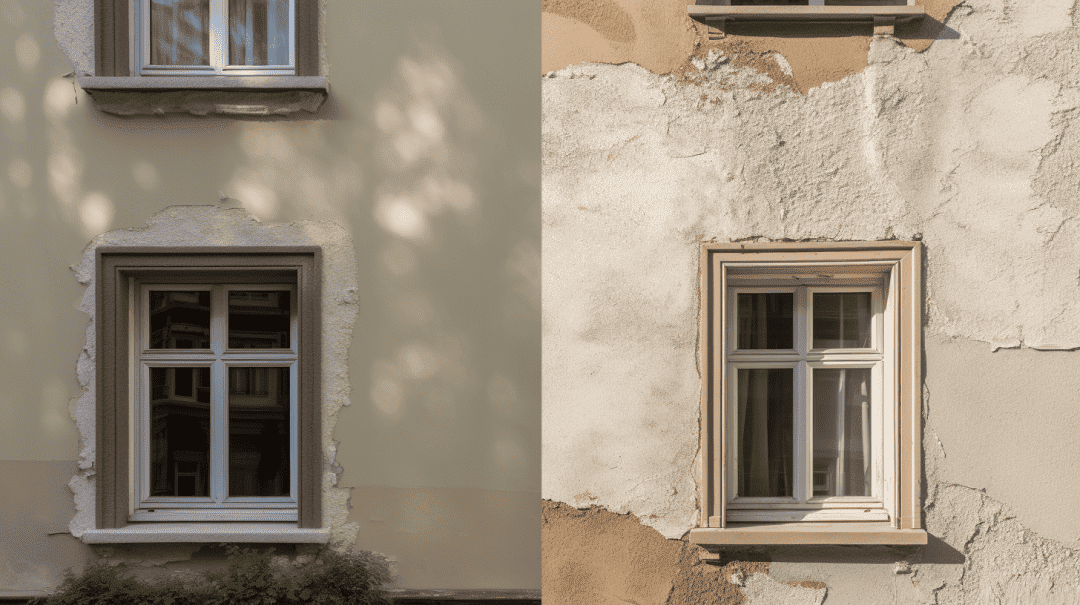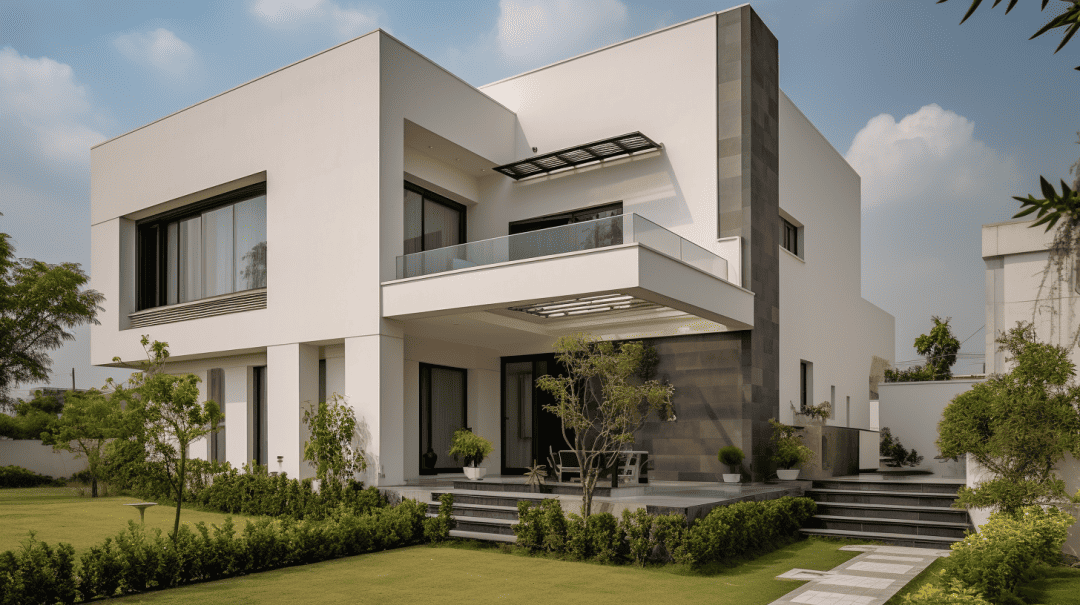Unveiling the Strengths and Weaknesses of Two Leading Exterior Cladding Options
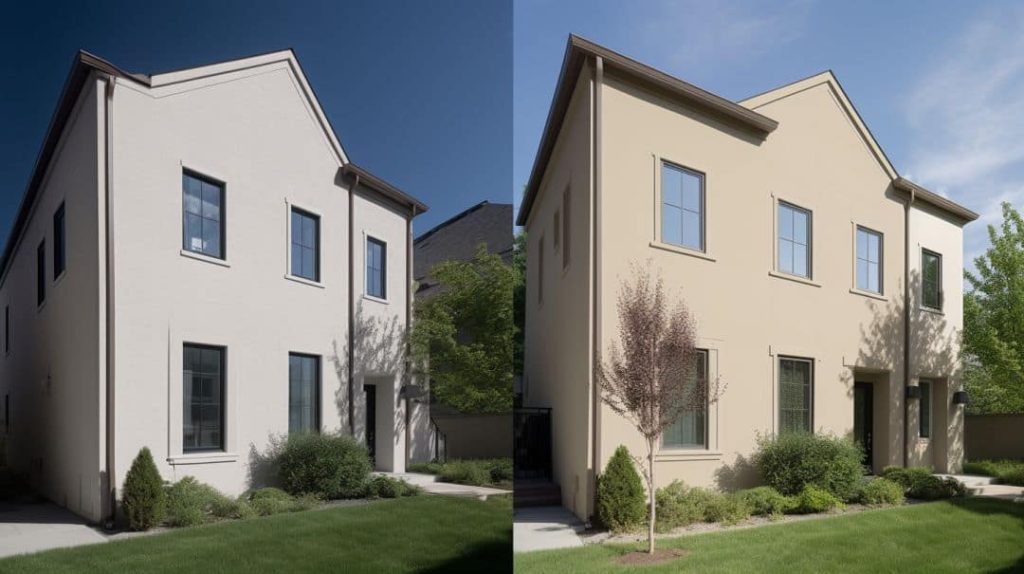
Exterior Insulation and Finish Systems (EIFS) and fiber cement are two popular exterior cladding options used in both residential and commercial construction. With improved aesthetics, durability, and energy efficiency, EIFS and fiber cement offer many benefits over traditional siding materials. However, choosing between them for your next project can be tricky.
In this comprehensive guide, we’ll break down the key differences between EIFS and fiber cement siding. We’ll compare the composition, installation process, appearance, durability, maintenance requirements, energy efficiency, cost, environmental impact, and warranties. With the pros and cons laid out, you’ll be equipped to determine which exterior cladding is the right fit for your specific needs.
Whether you’re looking to replace aging wood siding, re-side a home, or take on a large commercial project, understanding EIFS and fiber cement is crucial. Proper installation and maintenance are also essential to maximize the lifespan and return on investment of your exterior cladding. By the end of this guide, you’ll have the knowledge to make an informed, confident decision about using EIFS or fiber cement.
Definition of EIFS and Fiber Cement
EIFS stands for Exterior Insulation and Finish Systems. It is a multi-layered exterior wall cladding system that consists of:
- Adhesive or mechanical fasteners to attach insulation boards to the substrate
- Insulation boards – usually expanded polystyrene (EPS) foam
- Base coat layer that covers the insulation boards
- Fiberglass mesh embedded in the base coat for strength and impact resistance
- Finish coat layer that provides texture, color, and protection from weather
EIFS Key Features:
- Provides continuous insulation and weather protection
- Customizable finishes and textures
- Seamless, monolithic appearance
- Improved energy efficiency
- Thinner application than traditional stucco
Fiber Cement is a composite building material made of:
- Sand
- Portland cement
- Cellulose fibers from wood
- Water
Fiber Cement Key Features:
- Strong, durable, and fire resistant
- Can mimic wood, stucco, and masonry finishes
- Low maintenance material
- Resists rotting, cracking and prevents moisture damage
- Termite and pest resistant
Both EIFS and fiber cement offer improved aesthetics and performance over traditional building materials like wood siding or stucco. The key differences come down to the composition, installation, maintenance, and cost considerations which we’ll explore throughout this guide.
Composition and Installation Process
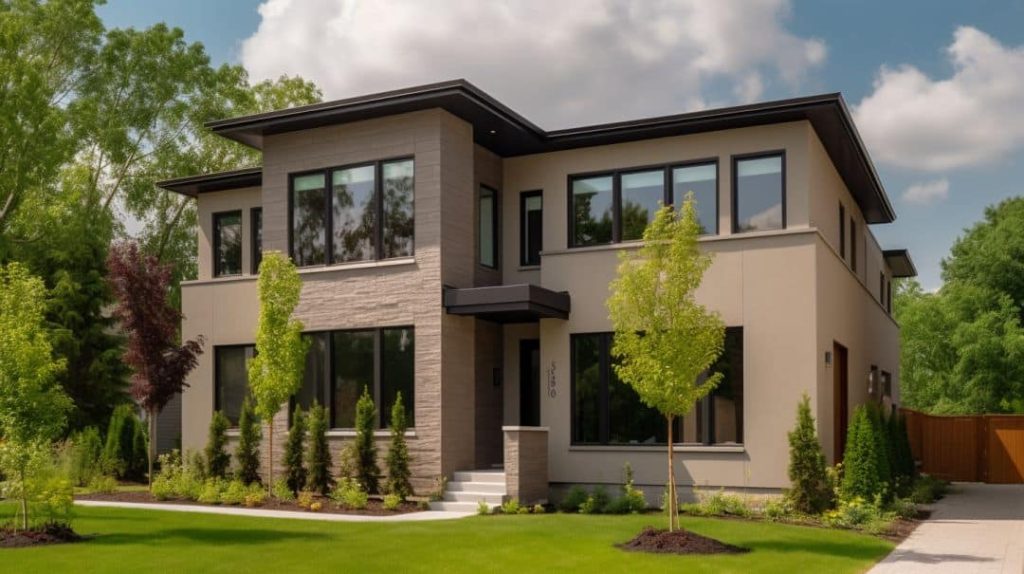
EIFS
EIFS is a layered synthetic wall cladding system consisting of:
- Adhesive or Mechanical Fasteners: Attaches insulation boards to substrate
- Insulation Boards: Expanded polystyrene (EPS) foam boards
- Base Coat: Reinforced layer over insulation boards
- Reinforcing Mesh: Fiberglass mesh embedded in base coat
- Finish Coat: Acrylic or polymer-based coating and texture
EIFS Installation Steps:
- Prepare and clean substrate
- Apply adhesive or fasteners to attach insulation boards
- Install drainage system if needed
- Apply base coat to insulation boards
- Embed reinforcing mesh into base coat
- Apply finish coat in desired texture and color
- Caulk seals around openings and joints
EIFS must be installed properly by trained professionals to ensure water tightness, structural integrity, and aesthetics.
Fiber Cement
Fiber cement contains:
- Sand: 50-70% of total weight
- Cement: 15-25% of total weight
- Cellulose Fiber: 5-15% of total weight
- Water: Mixes the ingredients
Fiber Cement Installation:
- Panels or planks are factory manufactured for installation onsite
- Can be installed vertically, horizontally, or diagonally
- Fastened to studs or substrate using nails, screws, or adhesive
- Requires caulking and painting for finished appearance
Fiber cement installation is simpler than EIFS but also requires proper techniques to create a durable, high-performing exterior.
The composition and installation process differs between the synthetic EIFS layers and the fiber cement planks or panels. Both require experienced contractors to maximize longevity.
Appearance and Design Options
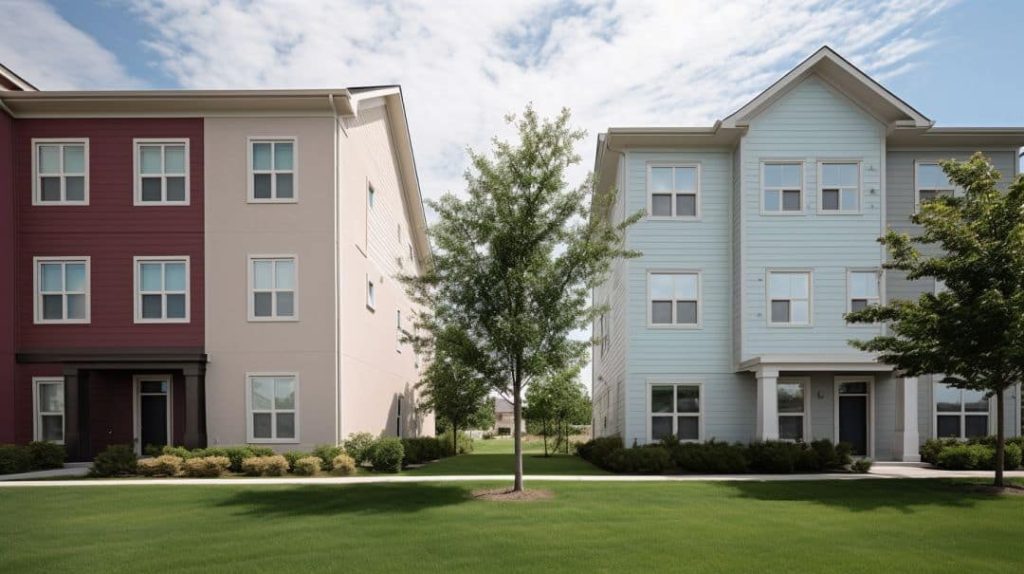
EIFS Textures and Finishes
- Smooth: Provides a stucco-like appearance
- Fine Sand: Light sand texture and appearance
- Coarse Sand: Heavier sand texture for a plaster look
- Extreme Depth: Deep texture for a hand-troweled look
- Specialty Finishes: Metallic, graphic patterned, etc.
EIFS acrylic and polymer finishes come in virtually unlimited colors and custom textures. The seamless application over insulation boards creates a monolithic appearance.
EIFS Design Options:
- Simulate traditional stucco, limestone, brick
- Incorporate trim, reveals, banding
- Curve around arches, angles, and columns
- Create modern geometric patterns
Fiber Cement Wood-like Appearance
Fiber cement is manufactured into planks, panels, shingles, and boards to mimic wood siding and shingle profiles.
- Cedar, redwood, pine wood grain look
- Smooth, brushed, or embossed surface textures
- Factory-primed or pre-painted finishes
- Trim pieces for corners, window surrounds, and bands
Fiber cement offers the appearance and workability of wood, without maintenance. It provides design flexibility to mix siding styles or coordinate trim accents.
Both EIFS and fiber cement offer broad design versatility from traditional to contemporary aesthetics. EIFS has limitless finish options while fiber cement focuses on replicating wood.
Durability and Maintenance
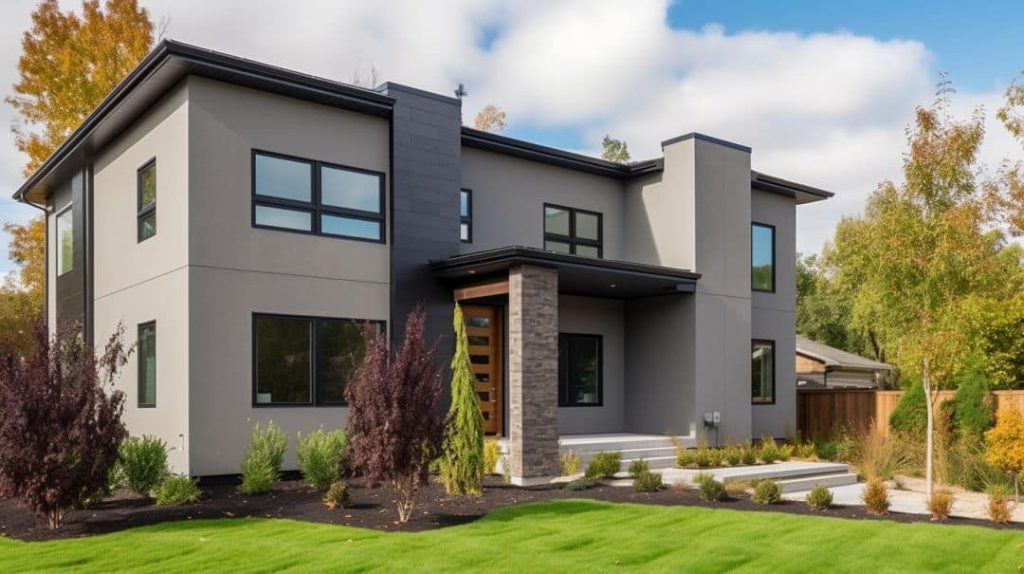
Resistance to Impact, Moisture, and Fire
EIFS
- Impact-resistant EPS foam and fiberglass mesh
- Moisture management with drainage system
- Non-combustible materials
- Fire resistance rating when installed over non-combustible substrate
Fiber Cement
- Impact resistant to hail, falling branches
- Moisture resistant, won’t rot or warp
- Non-combustible with Class A fire rating
Both EIFS and fiber cement provide excellent durability and resistance to common hazards. When installed properly with proper maintenance, they can last over 50 years.
Regular Maintenance Requirements
EIFS
- Annual inspections for cracks, damage
- Re-caulk joints every 2-3 years
- Spot repair minor cracks
- Power wash gently every 3-5 years
- Re-paint/re-coat as needed
Fiber Cement
- Inspect annually for cracks or gaps in joints
- Repaint every 7-10 years
- Replace damaged siding
- Re-caulk gaps between siding and trim
Fiber cement is generally lower maintenance than EIFS. However, both require regular inspection and minor repairs to maximize longevity. Neglecting maintenance can cause water damage over time.
Energy Efficiency

Insulation Properties
EIFS
- Continuous EPS foam insulation
- Typical R-values of R-5 to R-7 per inch
- Minimal thermal bridging
Fiber Cement
- No inherent insulation value
- Must be installed over a separate insulation layer
- Has potential for thermal bridging
Energy Saving Comparison
EIFS
- Total wall R-value of R-20+ is common
- Reduces heat loss through walls by up to 50%
- Can reduce heating and cooling costs by 15-30%
Fiber Cement
- Total wall R-value depends on added insulation
- Energy savings require proper installation of insulation
- Air sealing is critical to minimize thermal bridging
EIFS provides continuous insulation, boosting whole-wall energy efficiency. Fiber cement relies on layers of insulation that require careful detailing to limit thermal bridging and energy loss. In terms of inherent insulation properties, EIFS outperforms fiber cement.
Cost Comparison

Initial Installation Costs
EIFS
- $6-$9 per square foot installed
- Higher material and labor costs
- Costs vary by insulation thickness and finish type
Fiber Cement
- $5-$7 per square foot installed
- Lower material cost than EIFS
- Comparable labor costs
Additional Cost Factors:
- Accessibility – EIFS is better for multi-story heights
- Substrate prep – More intensive for EIFS
- Details like trim increase costs for both
Long-Term Maintenance Costs
EIFS
- Sealants and coatings needed every 3-7 years
- Occasional repairs from $300-500
- Power washing costs every few years
Fiber Cement
- Lower maintenance painting needed
- Siding replacement is $600+ per 100 sq. ft.
- Damaged siding repair costs are similar to EIFS
For large commercial projects, the higher initial cost of EIFS may be justified by lower lifetime maintenance costs compared to fiber cement. Wise material choice can optimize long-term value.
Here is the Environmental Impact section:
Environmental Impact
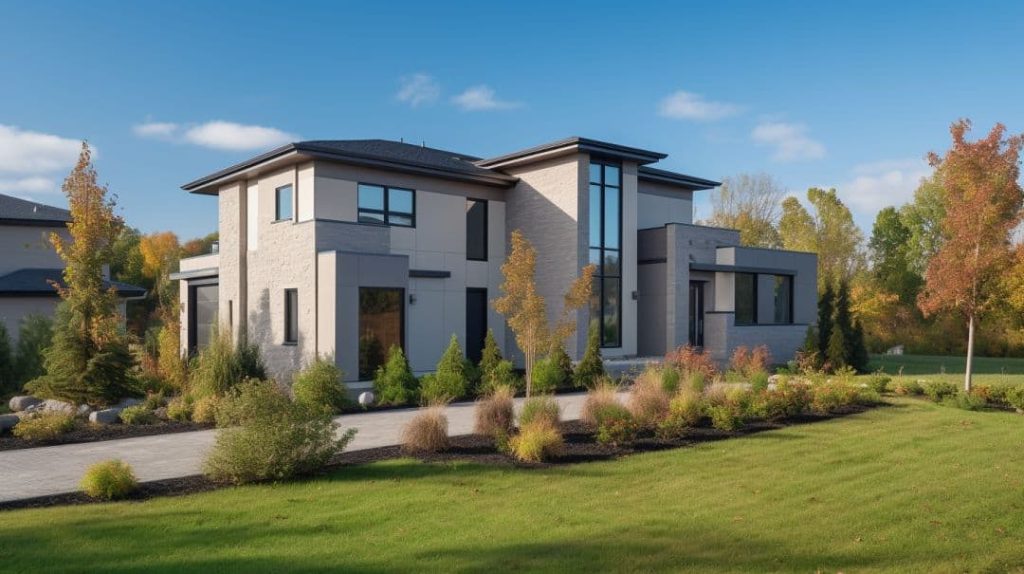
Energy Efficiency and Green Building Certifications
EIFS
- Can contribute to LEED and other green certifications through insulation levels
- Lower energy consumption reduces carbon footprint
Fiber Cement
- Primarily qualifies for points through recycled content and local sourcing
- Requires additional insulation to improve energy performance
Carbon Footprint Considerations
EIFS
- EPS is petroleum-based but has a long service life
- Offsets energy consumption over the lifespan
Fiber Cement
- Concrete production is carbon-intensive
- Wood pulp content has a lower carbon footprint
- Recyclable at end of life
Both materials can support green building goals. EIFS offers more inherent energy efficiency while fiber cement has recycled content and end-of-life recyclability. There is no clear winner regarding carbon footprint and sustainability.
Longevity and Warranty
Lifespan
EIFS
- Can last over 50 years with proper installation and maintenance
- Failure points are detachment, water damage, sealant failure
Fiber Cement
- Lifespan of 50+ years is common
- Siding failures include cracks, gaps, and fastener issues
With proper installation and care, both claddings can last upwards of 50 years or more. The key is preventing water infiltration and repairing any damage before it escalates.
Manufacturer Warranties
EIFS
- Total wall system warranties of 10-20 years
- Insulation board warranties up to 50 years
- Finish coat warranties around 15 years
Fiber Cement
- 50-year limited product warranties
- Covers cracking, swelling and delamination defects
- Requires installation per manufacturer specifications
Reputable manufacturers of both EIFS and fiber cement stand behind their products with decades-long warranties. Following best practices is key to maintaining warranty coverage.
Proper installation and maintenance are the biggest factors in maximizing the lifespan of either exterior cladding. When designed and installed correctly, both can last upwards of 50 years or more.
Conclusion
When it comes to choosing between EIFS and fiber cement cladding, there are many factors to weigh regarding composition, appearance, performance, costs, and sustainability impact. Based on our comprehensive comparison, there are several key advantages EIFS offers over fiber cement.
First, the continuous insulation inherent in the EIFS system enables far greater energy efficiency than fiber cement alone. With insulation R-values commonly reaching R-20 or higher, EIFS excels at reducing heat loss, utility bills, and environmental impact. Fiber cement requires layers of separate insulation to try to achieve similar energy performance. Proper detailing and installation of insulation are crucial to prevent thermal bridging and energy loss with fiber cement.
EIFS also provides an unmatched range of finish options to create beautiful, customized building exteriors. With numerous textures and unlimited colors, EIFS can mimic stucco, limestone, brick, and other designs. Fiber cement relies on planks or panels often limited to imitating a wood grain appearance in a smaller selection of colors. EIFS offers far more aesthetic versatility.
When it comes to durability and weather resistance, both EIFS and fiber cement perform well. The reinforced base coat and finish coat of EIFS stand up to impact, moisture, pests, and fire. Fiber cement provides similar durability but may be more vulnerable to damage from impacts. Both offer excellent longevity when properly maintained.
Regarding environmental impact, EIFS and fiber cement both have pros and cons. The petroleum-based EIFS offsets its carbon footprint over the long term by dramatically reducing energy consumption and utility emissions. Fiber cement touts recycled content and recyclability but still requires high-carbon concrete production. There is no clear sustainability advantage of one over the other.
Although the initial installation cost is higher for EIFS, the long-term maintenance costs are lower compared to routine painting and replacement of damaged fiber cement siding over decades. The higher upfront investment in EIFS may pay dividends over the building life cycle. Accessibility is also easier with EIFS for multi-story construction.
Overall, for many homeowners, builders, and designers, EIFS provides a better blend of custom aesthetics, energy efficiency, weather tightness, and flexibility for design creativity. While fiber cement does offer durability and a wood-like appearance, EIFS excels in the areas of continuous insulation, finish versatility, life cycle value, and accessibility. There are certainly applications where fiber cement may be preferable, but in many cases, EIFS is the superior cladding option.
If you are considering either material for an upcoming building project, reach out to reputable suppliers and contractors of both EIFS and fiber cement. Look at product samples and installation examples to get a true sense of the visual results. Review total installed and lifecycle costs. With this comprehensive guide, you now have the knowledge to make an informed, confident decision about choosing EIFS or fiber cement. Partner with experienced professionals and take advantage of all the benefits EIFS cladding has to offer.
FAQs
Which cladding provides more continuous insulation?
EIFS wins when it comes to continuous insulation. The EPS foam insulation boards are an integral part of the EIFS system. Fiber cement alone has no insulation value, requiring layers of insulation to be installed underneath it. EIFS minimizes thermal bridging far better than fiber cement.
Which material offers more design versatility?
EIFS provides virtually endless finish texture and color options. It can mimic stucco, limestone, brick, and other designs seamlessly across the facade. Fiber cement is limited to plank profiles and wood grain patterns. EIFS is far superior in creating customized, monolithic cladding designs.
Which cladding application typically lasts longer?
When properly installed and maintained, EIFS and fiber cement sidings have similar lifespans of 50+ years. EIFS warranties may exceed those of fiber cement and the reinforced layers help it avoid cracks and dents. EIFS finishes also tend to retain their color better than factory paints on fiber cement exposed to weathering.
Which material is easier to install on multi-story buildings?
EIFS excels for tall, multi-story installations. The layered system can be applied easily up to 8 stories or higher. Fiber cement siding gets heavier, and more difficult to lift and fasten at height. EIFS is far more suited to high-rise residential or commercial buildings.
Which provides the best return on investment?
The combination of energy savings, lower maintenance costs, and design versatility make EIFS a better long-term value in many cases. Its insulation and air sealing abilities can drastically cut utility bills. Lesser maintenance needs to reduce lifetime costs. Lastly, customized EIFS facades can elevate aesthetics and property value.

